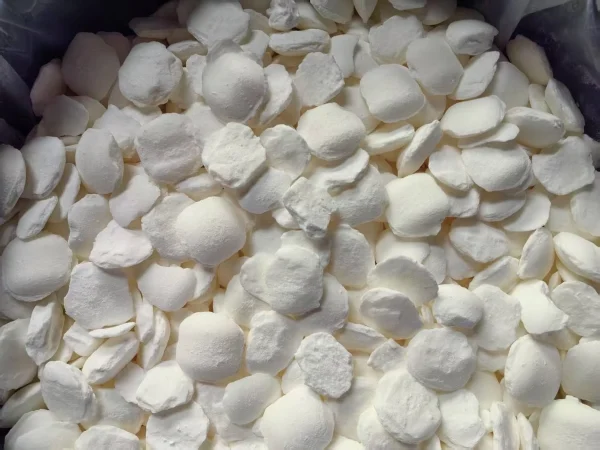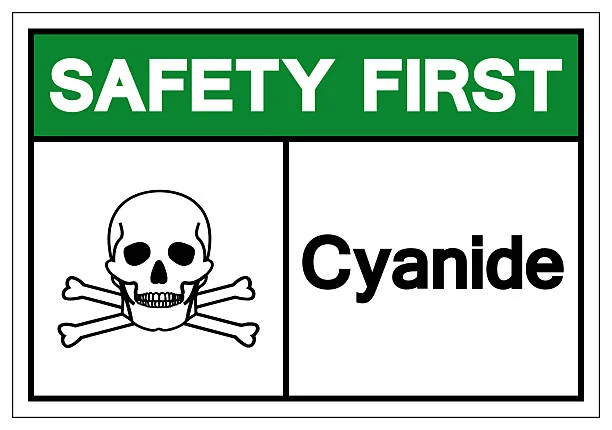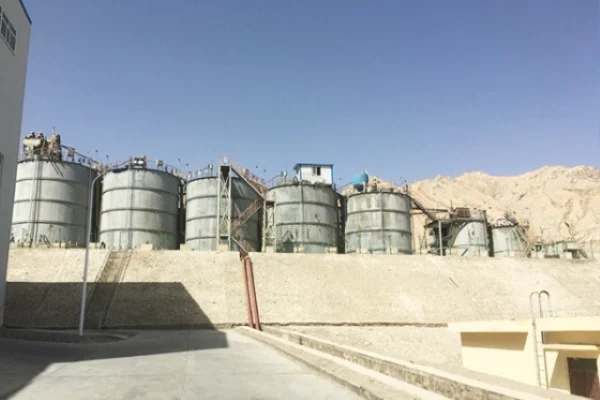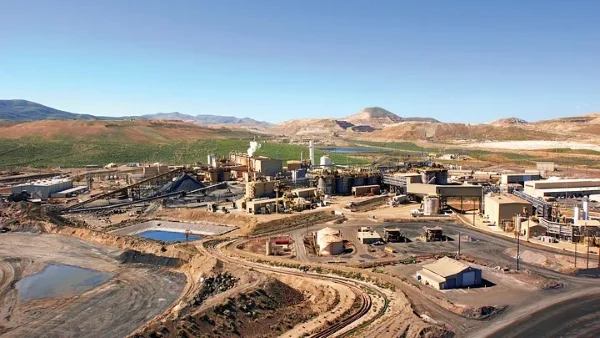
In the gold mining industry, the cyanide leaching process, particularly using Sodium cyanide, is a common method for extracting gold from ore. However, the Excessive use of Sodium Cyanide in this process can lead to a series of significant problems, which are detrimental to both the economic aspects of mining operations and the environment.
1. Increased Operational Costs
1.1 Higher Chemical Expenditure
Sodium cyanide is not an inexpensive reagent. When used in excessive amounts, the direct cost of purchasing this chemical rises substantially. Mines need to allocate a larger portion of their budget to acquire the necessary quantity of sodium cyanide. For example, if a mine usually operates with an optimal cyanide concentration of 0.05% - 0.1% in the leaching solution, but due to mismanagement or improper understanding of the process, the concentration is increased to 0.2%, the amount of sodium cyanide consumed per unit of ore processed will nearly double or triple. This directly inflates the chemical procurement costs, eating into the profit margins of the mining operation.
1.2 Additional Treatment Costs
Excessive sodium cyanide in the leaching process results in higher levels of cyanide in the wastewater generated. Treating this wastewater to meet environmental discharge standards becomes more complex and costly. Conventional methods for cyanide removal from wastewater, such as chemical oxidation (using chlorine or hydrogen peroxide), biological treatment, or ion exchange, all require more reagents, energy, and longer treatment times when the cyanide concentration is elevated. For instance, in a chemical oxidation process, more oxidizing agents need to be added to break down the higher levels of cyanide. This not only increases the cost of the oxidizing chemicals but also may require larger reaction vessels and more energy for mixing and reaction, thus adding to the overall operational costs of the mine.
2. Environmental Pollution
2.1 Water Pollution
2.1.1 Aquatic Ecosystem Disruption
When excessive sodium cyanide is present in the leaching process, there is an increased risk of cyanide spills into water bodies. Cyanide is highly toxic to aquatic life. Even at low concentrations, it can cause serious harm to fish, invertebrates, and other aquatic organisms. For example, in the case of the Baia Mare cyanide spill in Romania in 2000. a tailings dam rupture released 100.000 cubic meters of cyanide - contaminated wastewater into the Tisza and Danube rivers. The high levels of cyanide in the water killed large numbers of fish, disrupting the entire aquatic food chain. Aquatic plants may also be affected, as cyanide can interfere with their photosynthesis and respiration processes, leading to reduced growth and productivity.
2.1.2 Drinking Water Contamination
Cyanide - contaminated water from mining operations can also seep into groundwater sources or contaminate surface water used for drinking water supplies. Cyanide in drinking water is a serious health hazard. Even small amounts of cyanide can cause acute health effects such as headaches, dizziness, and in severe cases, can be fatal. In the United States, in 1982. at the Zortman - Landusky mine in Montana, 52.000 gallons of cyanide solution leaked and poisoned the aquifer that supplied fresh drinking water for the town of Zortman. This incident highlighted the potential of mining - related cyanide pollution to endanger human health through drinking water contamination.
2.2 Soil Pollution
If cyanide - containing wastewater or solid waste from the mining process (such as tailings) is improperly disposed of on land, it can contaminate the soil. Cyanide in the soil can persist for a long time, especially in anaerobic conditions. This can have several negative impacts on the soil ecosystem. It can inhibit the growth of plants by interfering with their root function and nutrient uptake. Some plants may show stunted growth, yellowing of leaves, or even die. Additionally, soil microorganisms, which play a crucial role in nutrient cycling and soil fertility, can be severely affected. The activity of beneficial bacteria and fungi may be inhibited, leading to a decline in soil quality and productivity.
2.3 Air Pollution
In the Gold leaching process, if the conditions are not properly controlled, excessive sodium cyanide can lead to the formation and release of hydrogen cyanide (HCN) gas. HCN is a volatile and extremely toxic gas. When sodium cyanide reacts with acids (which may be present in the ore or added during the process) or under certain pH conditions, HCN can be produced. For example, when the pH of the leaching solution drops below a certain level, sodium cyanide can react with acidic substances in the solution to form hydrogen cyanide and sodium compounds. The release of HCN gas into the air poses a significant threat to the health of mine workers and nearby communities. Inhalation of HCN can cause rapid breathing, dizziness, nausea, and in high concentrations, can be immediately life - threatening.
3. Impact on the Leaching Process Itself
3.1 Slower Leaching Rates
Contrary to what might be expected, using an excessive amount of sodium cyanide does not necessarily lead to faster or more efficient Gold extraction. In fact, in some cases, it can have the opposite effect. High concentrations of cyanide can cause the formation of metal - cyanide complexes with other metals present in the ore, such as copper, zinc, or iron. These complexes can consume cyanide and reduce the amount of free cyanide available for reacting with gold. For example, copper present in the ore can form stable copper - cyanide complexes. As a result, the rate of gold dissolution may slow down, and the overall leaching efficiency may decrease.
3.2 Interference with Subsequent Treatment Steps
Excessive cyanide in the leaching solution can also cause problems in subsequent steps of the gold recovery process. For instance, in the process of precipitating gold from the leachate using zinc dust (the Merrill - Crowe process), high cyanide concentrations can lead to the formation of zinc - cyanide complexes. These complexes can interfere with the precipitation of gold, reducing the yield of gold recovery. Additionally, in the case of using activated carbon for gold adsorption from the leachate, excessive cyanide can affect the adsorption capacity of the carbon, as some cyanide - metal complexes may also be adsorbed on the carbon surface, competing with gold for adsorption sites.
In conclusion, the excessive use of sodium cyanide in the gold leaching process is a multi - faceted problem that has far - reaching implications for the mining industry, the environment, and human health. Mines must carefully monitor and control the amount of sodium cyanide used in the leaching process to ensure efficient, cost - effective, and environmentally sustainable gold extraction.
- Random Content
- Hot content
- Hot review content
- Soda Ash Dense / Light 99.2% Sodium Carbonate Washing Soda
- Industrial Grade Sodium Metabisulfite 96.5%
- High-strength Shock tube(VOD≧2000m/s)
- Toluene
- Citric acid-Food Grade
- Phthalic anhydride
- butyl vinyl ether
- 1Discounted Sodium Cyanide (CAS: 143-33-9) for Mining - High Quality & Competitive Pricing
- 2China's New Regulations on Sodium Cyanide Exports and Guidance for International Buyers
- 3Sodium Cyanide 98% CAS 143-33-9 gold dressing agent Essential for Mining and Chemical Industries
- 4International Cyanide(Sodium cyanide) Management Code - Gold Mine Acceptance Standards
- 5China factory Sulfuric Acid 98%
- 6Anhydrous Oxalic acid 99.6% Industrial Grade
- 7Oxalic acid for mining 99.6%
- 1Sodium Cyanide 98% CAS 143-33-9 gold dressing agent Essential for Mining and Chemical Industries
- 2High Quality 99% Purity of Cyanuric chloride ISO 9001:2005 REACH Verified Producer
- 3Zinc chloride ZnCl2 for High Molecular Weight Polymers Initiator
- 4High Purity · Stable Performance · Higher Recovery — sodium cyanide for modern gold leaching
- 5High Quality Sodium Ferrocyanide / Sodium Hexacyanoferr
- 6Gold Ore Dressing Agent Safe Gold Extracting Agent Replace Sodium Cyanide
- 7Sodium Cyanide 98%+ CAS 143-33-9











Online message consultation
Add comment: